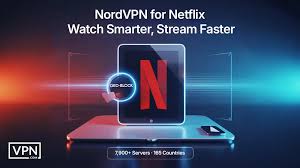Introduction:
In today’s digital age, cybersecurity is more important than ever. With cyber threats evolving and becoming more sophisticated, it’s crucial for individuals and businesses alike to prioritize their online security. Whether you’re a small business owner, an entrepreneur, or simply someone who values their privacy and security online, understanding the basics of cybersecurity is essential. In this comprehensive guide, we’ll explore the fundamentals of cybersecurity and provide actionable tips for implementing vital security measures to protect yourself and your business from cyber threats.
Understanding Cybersecurity:
What Is It and Why Does It Matter?
Cybersecurity encompasses the practices, technologies, and processes designed to protect digital systems, networks, and data from cyber threats. These threats can include malware, phishing attacks, ransomware, data breaches, and more. Cybersecurity is crucial because it helps prevent unauthorized access to sensitive information, maintains the integrity and confidentiality of data, and ensures the availability of essential services and resources.
The Importance of Implementing Vital Security Measures:
Implementing vital security measures is essential for safeguarding against cyber threats and minimizing the risk of security breaches. By proactively addressing potential vulnerabilities and adopting best practices, individuals and businesses can significantly reduce their exposure to cyber risks and protect their digital assets.
1. Strong Password Management:
One of the most basic yet critical security measures is maintaining strong password hygiene. Weak passwords are a common entry point for cybercriminals looking to gain unauthorized access to accounts and systems. To enhance your password security:
Use complex passwords that include a mix of letters, numbers, and special characters.
Avoid using easily guessable information such as birthdays or pet names.
Consider using a password manager to generate and store strong, unique passwords for each of your accounts.
2. Enable Two-Factor Authentication (2FA):
Two-factor authentication (2FA) adds an extra layer of security to your accounts by requiring users to provide two forms of identification before granting access. This typically involves something you know (such as a password) and something you have (such as a smartphone or hardware token). Enable 2FA whenever possible to enhance the security of your accounts and protect against unauthorized access.
3. Keep Software and Systems Updated:
Keeping your software and systems updated with the latest security patches is crucial for protecting against known vulnerabilities and exploits. Cybercriminals often target outdated software to exploit security flaws and gain access to systems or data. Regularly update your operating systems, applications, and firmware to ensure that you’re protected against the latest threats.
4. Implement Secure Network Practices:
Securing your network is essential for preventing unauthorized access and protecting sensitive data. Follow these best practices to enhance your network security:
Use a firewall to monitor and control incoming and outgoing network traffic.
Encrypt your Wi-Fi network with a strong, unique password to prevent unauthorized access.
Regularly monitor network activity for signs of suspicious behavior or unauthorized access attempts.
5. Educate Employees on Cybersecurity Awareness:
Human error is one of the leading causes of security breaches. Educating employees on cybersecurity best practices and raising awareness about potential threats can help mitigate the risk of insider threats and phishing attacks. Provide regular training and awareness programs to ensure that employees understand their role in maintaining a secure work environment.
6. Regularly Back Up Your Data:
Data loss can occur due to various factors, including hardware failures, malware infections, or human error. Regularly backing up your data is essential for ensuring that you can recover quickly in the event of a data loss incident. Implement a robust backup strategy that includes both onsite and offsite backups, and test your backups regularly to ensure their integrity and reliability.
7. Implement Access Controls and Least Privilege:
Not all users need access to sensitive information or critical systems. Implement access controls and follow the principle of least privilege to restrict access to only those individuals who require it to perform their job responsibilities. By limiting access to sensitive data and systems, you can minimize the risk of unauthorized access and data breaches.
8. Monitor and Respond to Security Incidents:
Proactive monitoring and incident response are essential for identifying and mitigating security threats in a timely manner. Implement security monitoring tools and protocols to detect and respond to suspicious activity or security incidents promptly. Develop an incident response plan outlining procedures for investigating, containing, and recovering from security breaches or data breaches.
9. Encrypt Sensitive Data:
Encryption is an effective way to protect sensitive data from unauthorized access, even if it falls into the wrong hands. Implement encryption protocols to encrypt data both in transit and at rest, ensuring that it remains secure from interception or theft. Utilize strong encryption algorithms and key management practices to safeguard your sensitive information effectively.
10. Stay Informed and Adapt to Emerging Threats:
The cybersecurity landscape is constantly evolving, with new threats and vulnerabilities emerging regularly. Stay informed about the latest cybersecurity trends, threats, and best practices by following industry news, attending conferences, and participating in cybersecurity forums. Be prepared to adapt your security measures accordingly to address new and emerging threats effectively.
Conclusion:
Cybersecurity is a critical aspect of our digital lives, and understanding the basics is essential for protecting yourself and your business from cyber threats. By implementing vital security measures such as strong password management, enabling two-factor authentication, keeping software and systems updated, and educating employees on cybersecurity awareness, you can significantly reduce your risk exposure and safeguard your digital assets. Remember, cybersecurity is an ongoing effort that requires vigilance, awareness, and proactive measures to stay ahead of evolving threats in today’s digital landscape.



































